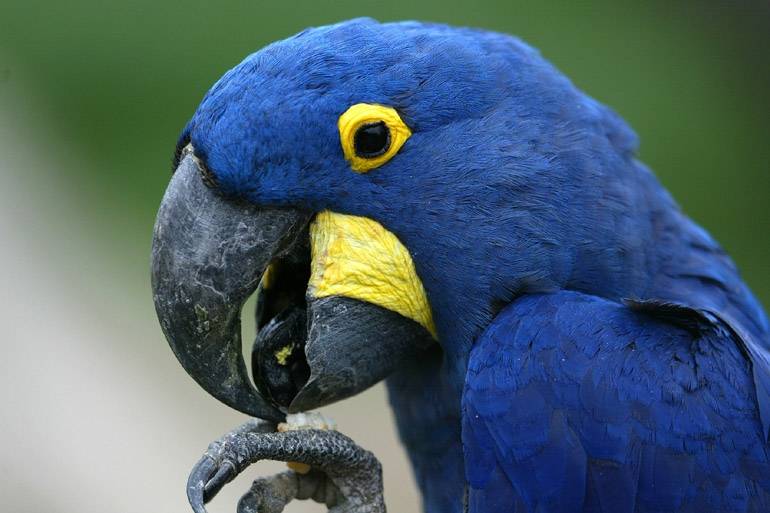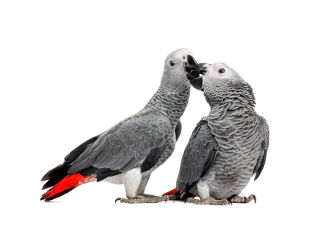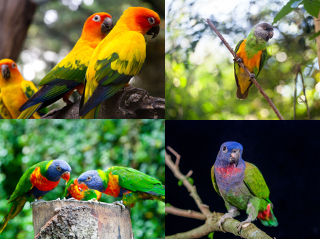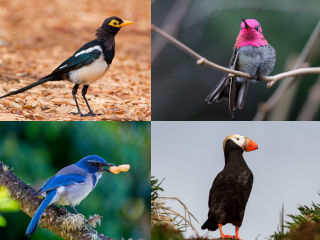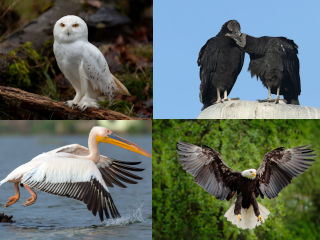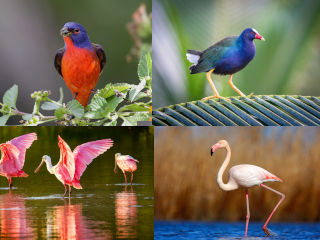Today, we going to talk about parrots feeding. And how do this properly, without any harm to your macaw.
Comical, loving, and mischievous, blue and gold macaws are popular pets. These parrots are among the most affectionate and intelligent birds in the world, but keeping them healthy as pets takes an understanding of what they need to eat.
- Wild Diet
Blue and gold macaws are native to swampy areas of the South American rainforest. In the wild, their diets consists of various seeds, nuts and fruits. They are particularly fond of the fruits of palms, but they also enjoy the occasional vegetable. Nevertheless, some underripe seeds contain toxins that blue and gold macaws can't digest. They treat this problem by eating clay found on riverbanks.
- Seeds
Bird seed mixes are often the staple food for many pet birds and parrots. Common seeds found in bird food seed mixes include safflower seeds, sunflower seeds, millet seed, canary seed, hemp seed, thistle seed and more.
A seed consists of four parts: the germ, the cotyledon, the endosperm and the hull. What pet birds eat are ungerminated seeds, which have not started growing to become plants. A bird hulls the seed so it can eat the germ, the cotyledon and the endosperm. Pet birds can eat germinated seed, too, when you sprout bird seed.
- Pellets
A pellet usually consists of ground up grains and seeds, vitamins and minerals that are baked at a low heat and formed into shapes. The different shapes that pellets are formed in can vary from little spheres to pellets that look like Cheerios. Some pellets are colored to appeal to your bird, while other pellets are natural colors, mostly browns. A number of pelleted diets are available to buy. Work with your avian veterinarian to determine the best pelleted diet for your pet bird. Some aviculturists do not recommend feeding dry pellets to lories and other softbills. Talk with your veterinarian about the best bird foods to feed your softbills.
- Vegetables
Many vegetables are packed full of vitamins, fiber, protein, calcium and other nutrients. Offer your bird freshly washed freshly washed vegetable, such as dark-leafy greens, such as parsley, spinach, kale, collard greens and Swiss chard. Bell peppers, squashes (e.g. pumpkins, butternut, spaghetti, plus roasted seeds), sweet potatoes, green beans and carrots are also great for your bird. Mix in legumes, sprouts and whole grains (e.g., quinoa, brown rice, oats) with your bird’s vegetables. Do not put any sort of dressing on your bird’s vegetables, and remove the food after a few hours so it doesn’t spoil.
- Protein
Foods high in plant protein are broccoli, quinoa, soybeans (edamame), legumes/beans, nuts and sprouts. You can also feed moderate amounts of animal-based proteins, such as well-cooked, unseasoned chicken, turkey or fish. Unseasoned scrambled eggs are another option, and you can crumple up and cook the shell with the egg.
Some birds, like macaws, need extra protein sources, like nuts. Good nuts to offer are walnuts, almonds, hazelnuts, macadamia nuts and more. Feed plain nuts only, not salted or honey-roasted.
- Fruits
Feed fruits high in vitamin A. Some fruits high in vitamin A content include mangoes, papayas, cantaloupe, persimmon, apricots and pomegranates. Feed lots of berries, like blueberries, strawberries, etc. Fruit is a great visual treat for your bird as well; fruits are so bright and colorful, your bird will have to give it a try!
- Cook Mixes
Cooking for your bird can be fun! A number of soak-and-cook vegetable mixes and birdie bread/muffin packages are available. Follow the instructions, and you can serve your bird a home-cooked meal in minutes.
- Treats
There is nothing like a treat every now and then! Many bird food companies offer different bird treats that you can give your bird. These can be fed every now and then, or used when you are training your bird.
Portions and feed rate:
How much should you feed? Talk to your avian veterinarian about the specific portions to give your bird. Many veterinarians recommend a 1/4 cup of pellets per day for small birds and a 1/2 cup of pellets per day for larger parrots. Follow your bird food package instructions, as well. When feeding fruits and vegetables, the smaller the portion you give, the better. If your bird is eating so much food that it doesn’t eat its primary food (which should be a pelleted or formulated food diet), it’s time to feed less vegetables, fruits and other items.
Put yourself in your bird’s place. If you are a cockatiel, a single grape is the size of your head and that’s far too much food to eat for one bird! Feed a 1/2 to 1 teaspoon of fruit to a small bird, and a tablespoon of fruit for larger birds. Feed half of a spoonful of vegetables and a 1/2 tablespoon of a protein source to your smaller birds. Feed a small spoonful of vegetables and 1 1/2 tablespoon of a protein source to your larger bird.
